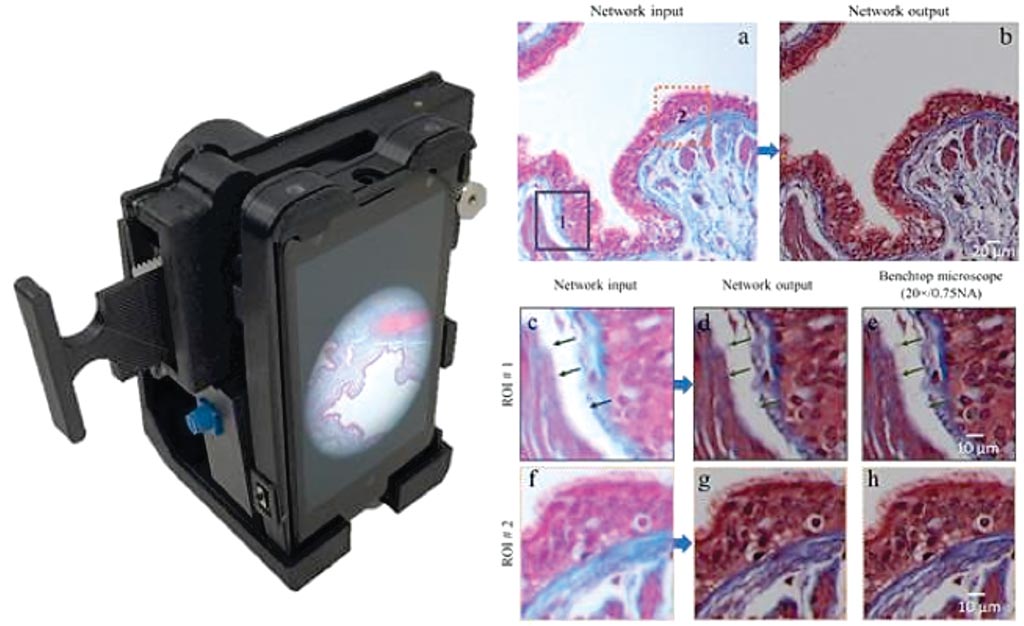Smartphone Microscopes Transformed into Lab Devices
By LabMedica International staff writers
Posted on 25 Apr 2018
Mobile phones have facilitated the creation of field-portable, cost-effective imaging and sensing technologies that approach laboratory-grade instrument performance. However, the optical imaging interfaces of mobile phones are not designed for microscopy and produce distortions in imaging microscopic specimens.Posted on 25 Apr 2018
It has recently been demonstrated that deep learning, a powerful form of artificial intelligence, can discern and enhance microscopic details in photos taken by smartphones. The technique improves the resolution and color details of smartphone images so much that they approach the quality of images from laboratory-grade microscopes.

Image: The 3D printed devices can capture microscopic images, when attached to a smartphone camera lens (Photo courtesy of Ozcan Research Group/UCLA).
Bioengineers at the Samueli School of Engineering, University of California (Los Angeles, CA; USA) photographed images of lung tissue samples, blood and Papanicolaou smears, first using a standard laboratory-grade microscope, and then with a smartphone with the 3D-printed microscope attachment. The scientists then fed the pairs of corresponding images into a computer system that "learns" how to rapidly enhance the mobile phone images. The process relies on a deep-learning-based computer code, which they had developed.
The use of deep learning to correct such distortions introduced by mobile-phone-based microscopes, facilitating the production of high-resolution, denoised, and color-corrected images, matching the performance of benchtop microscopes with high-end objective lenses, also extending their limited depth of field. After training a convolutional neural network, they successfully imaged various samples, including human tissue sections and Papanicolaou and blood smears, where the recorded images were highly compressed to ease storage and transmission. The technique uses attachments that can be inexpensively produced with a 3D printer, at less than USD100 a piece, versus the thousands of dollars it would cost to buy laboratory-grade equipment that produces images of similar quality.
Aydogan Ozcan, PhD, a Professor of Electrical and Computer Engineering and Bioengineering, said, “Using deep learning, we set out to bridge the gap in image quality between inexpensive mobile phone-based microscopes and gold-standard bench-top microscopes that use high-end lenses. We believe that our approach is broadly applicable to other low-cost microscopy systems that use, for example, inexpensive lenses or cameras, and could facilitate the replacement of high-end bench-top microscopes with cost-effective, mobile alternatives.” The study was published online on March 15, 2018, in the journal ACS Photonics.
Related Links:
Samueli School of Engineering, University of California














